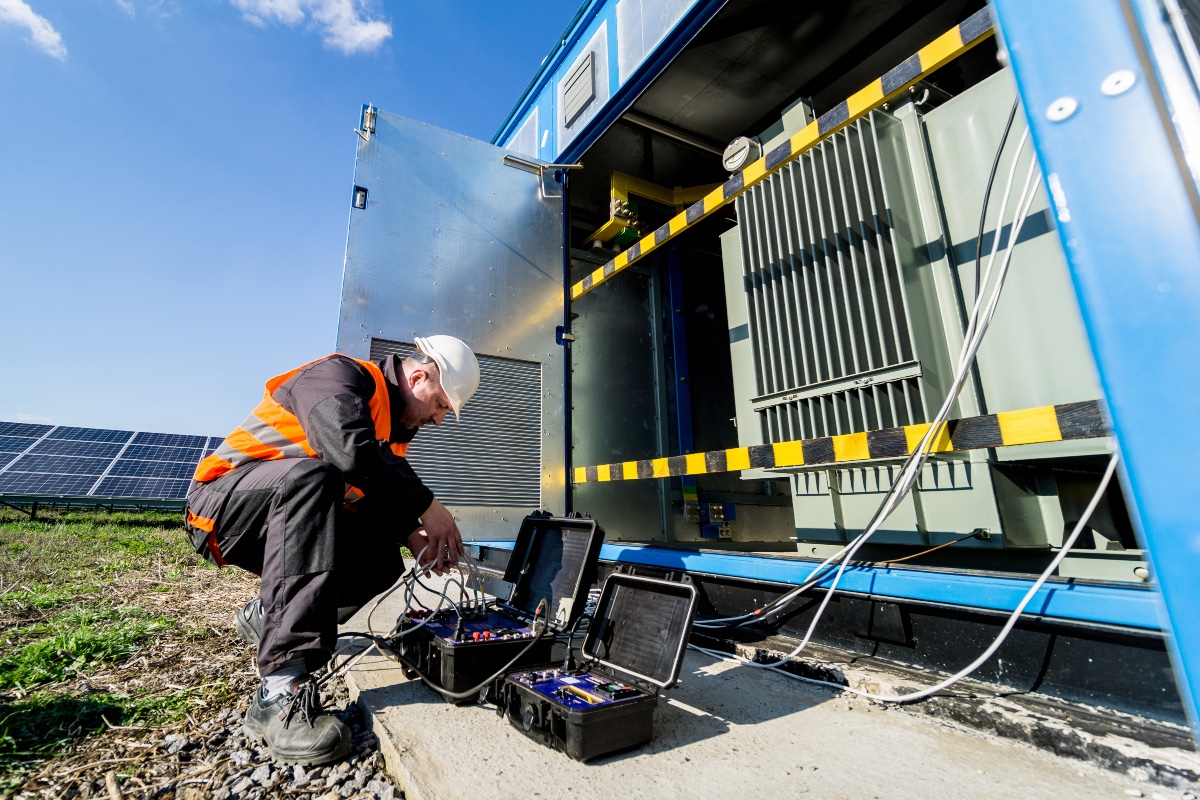Could organisations be unwittingly stalling their decarbonisation efforts by overlooking one key piece of infrastructure? Claire Tonks, Account Manager at Powerstar, finds out.
A significant proportion of UK companies are fearful of missing decarbonisation targets; of risking investment without sufficient certainty on the returns, and of the reputational risk of greenwashing. This can lead to greenstalling – a lack of action for fear of taking the wrong route.
In fact, nearly 80% of respondents to the Carbon Trust and Net Zero Intelligence Unit’s Breaking Business Barriers to Net Zero report agreed that greenwashing represents a major reputational risk. But alongside the fear of backlash from erroneous decarbonisation claims, there is a host of additional reasons behind businesses’ hesitancy to act on net zero: uncertainty over regulations and government support; the lack of trustworthy sources of accurate information in a changing economic and energy landscape, and – with new energy technologies developing at pace – not knowing where to start to achieve the most effective results.
All of this indicates that greenstalling is not a preferred course of action, but that businesses are operating within a complex scenario where they must navigate both internal and external pressures while balancing responses to a constantly evolving sustainability landscape. This is why it makes sense to think of decarbonisation as a journey, and why the Carbon Trust and Net Zero Intelligence Unit’s emphasis on first steps is highly pertinent.
As explained in the report, “Your business cannot do everything at once. Focus first on the areas that can drive the greatest impact, based on a rigorous assessment of the risks and opportunities for your business, and take action there…”
Balancing immediate gains with lasting Impact
In 2022, Forbes looked at the tension between long-term and short-term sustainability ambitions. The average tenure of a CEO within a S&P 500 company is less than eight years, making long-term sustainability strategies a somewhat challenging concept. Hence the need for short-term decarbonisation goals which can reap immediate benefits.
In this context, it makes sense for businesses to look at their existing energy management assets to establish where savings can be made to offer a timely return while contributing to decarbonisation strategies. Widely used throughout the UK, transformers can be the ideal starting point.
Many businesses already consider transformers a vital energy management asset, to step-up or step-down incoming voltage for usable on-site power supply. And, where a company has already invested in on-site renewables such as solar PV or wind turbines, a transformer is vital for the integration of this sustainable energy.
The increased uptake of on-site renewables is a significant issue for companies that rely on transformers given the ensuing increased demand for these assets. The UK’s transformer fleet is ageing, with a Freedom of Information request to Ofgem finding that the average age of the UK’s fleet of approximately 230,000 transformers is over 60 years.
Given that we now understand that the anticipated design lifespan of a transformer should be about 20 years, there are clear and pressing issues.
As the global demand for transformers increases, transformer failure means not only production downtime and the possibility of wastage or scrappage of product, but also a potentially lengthy wait for a replacement to be sourced, delivered and installed. Given the concerns around greenwashing and how these can lead to greenstalling, it’s ironic that neglecting to review transformers and replace with a modern alternative can, in itself, create reputational harm if customers are let down due to operational failure or lengthy delays. Therefore, assessing the age of your transformers supports on-site power resilience while helping to maintain your reputation.
Investing in the future
One hurdle slowing companies down in their net zero journey relates to corporate buy-in and the need to demonstrate a return on investment, where budgets can be contested and other business priorities seem more immediate. But replacing outdated transformers with a modern alternative can offer reduced operating costs, lower maintenance costs when failures are fewer, and lower energy spend – meaning reduced carbon emissions.
While the initial cost for a modern amorphous core transformer may be higher than for a traditional option, they offer major benefits, with up to 70% lower core losses as compared to conventional transformers. Additionally, a modern transformer includes integrated remote monitoring, providing real-time insights into asset performance, providing the visibility to allow for proactive maintenance, helping to minimise downtime.
Furthermore, transformers sourced from a UK manufacturer may offer further sustainability-related benefits, as your own Scope 2 emissions are reduced which can provide a competitive advantage by helping customers address their Scope 3 emissions – notoriously the hardest to quantify and reduce.
Where local sourcing is a strategic priority, in addition to reduced transport-related emissions, rigorous quality control based in the UK can help avoid the pitfalls that can come with importing equipment while keeping lead times as short as possible.
Avoiding analysis-paralysis
The concept of greenstalling is a real issue for businesses who have a genuine desire to decarbonise and to meet the demands of a net zero future. With a legally-binding national target of 2050, analysis-paralysis is not tenable, either in the long- or the short-term.
The Breaking Business Barriers to Net Zero report identifies critical factors hampering progress, including gaining stakeholder buy-in and fear around external scrutiny. It also highlights the need to focus on where you can take immediate action. Businesses have legitimate concerns over the potential for reputational damage, and over financial priorities that seem more immediately pressing than investing in emission reduction.
Yet there is, arguably, greater potential damage in not actively progressing with a sustainability plan – with loss of customer and investor engagement, and a negative impact on attracting and retaining the best employees.
In financial terms, there are both long- and short-term implications for businesses who fall behind: where sustainability is an increasingly important aspect in investment and loan terms, and where there are short-term gains to be had through better energy management.
Looking at net zero as a journey rather than a destination can make embarking on decarbonisation a far less daunting prospect. Reviewing your existing assets and improving their efficiency can be an ideal starting point. Offering the opportunity to demonstrate a quantifiable commitment to improved energy management for greater sustainability while reducing energy costs to help shore up stakeholder buy-in, transformers are a clear case in point.


